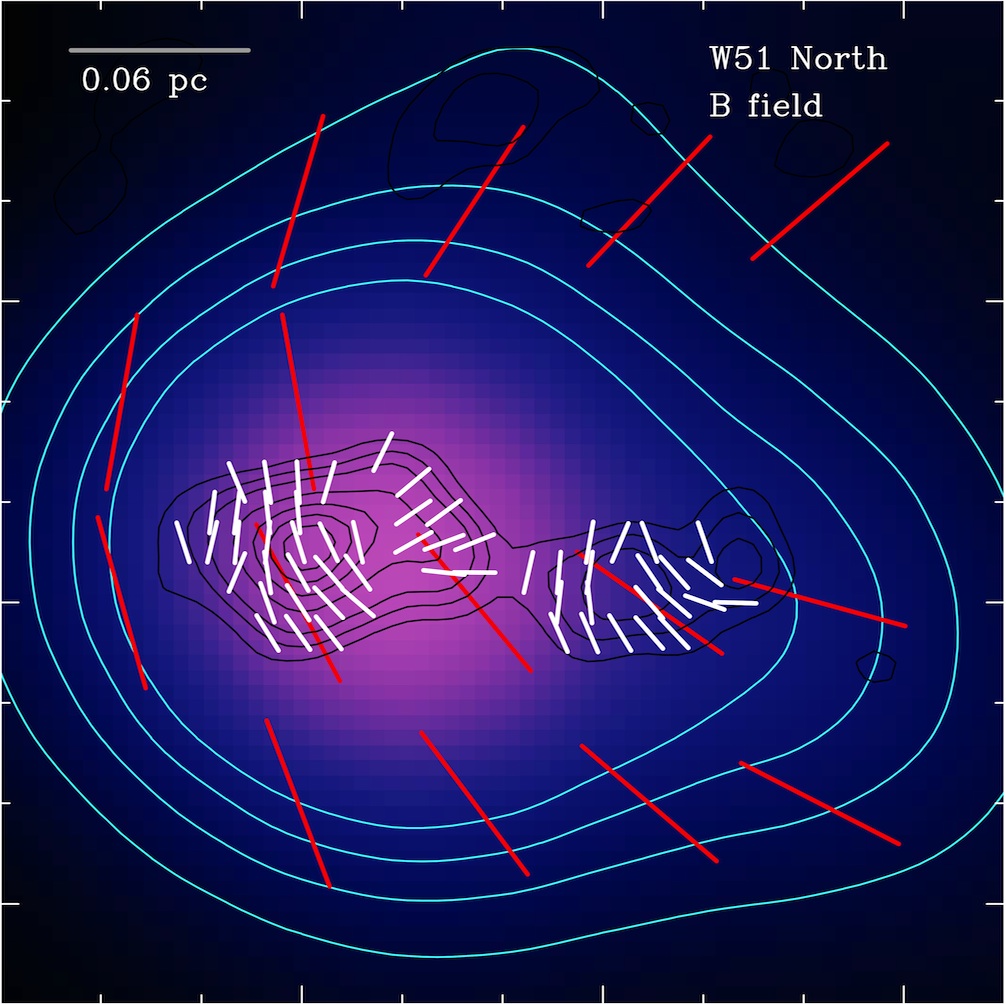|
Home \ Science \ Scientific Highlights
Scientific Highlights with the SMADust continuum and polarization from envelope to cores in star formation: a case study in the W51 North regionIn Tang et al. (2013) we present the first high-angular resolution (up to 0.''7, ~5000 AU) polarization and thermal dust continuum images toward the massive star-forming region W51 North. W51 North is resolved into four cores (SMA1 to SMA4) in the 870 μm continuum image. We analyze the inferred morphologies of the plane-of-sky magnetic field (B) in the SMA1 to SMA4 cores and in the envelope using the SMA-Ext and SMA-SubC data. These results are compared with the B archive images obtained from the Caltech Submillimeter Observatory (CSO) and James Clerk Maxwell Telescope (JCMT). A correlation between dust intensity gradient position angles (phi∇I) and magnetic field position angles (phiB) is found in the CSO, JCMT, and both SMA data sets. This correlation is further analyzed quantitatively. A systematically tighter correlation between phi∇I and phiB is found in the cores, whereas the correlation decreases in outside-core regions. Magnetic field-to-gravity force ratio (ΣB) maps are derived using the newly developed polarization-intensity gradient method by Koch et al. We find that the force ratios tend to be small (ΣB <~ 0.5) in the cores in all four data sets. In regions outside of the cores, the ratios increase or the field is even dominating gravity (ΣB > 1). This possibly provides a physical explanation of the tightening correlation between phi∇I and phiB in the cores: The more the B field lines are dragged and aligned by gravity, the tighter the correlation is. Finally, we propose a schematic scenario for the magnetic field in W51 North to interpret the four polarization observations at different physical scales.
SMA observational results of the dust continuum emission at wavelengths of 870 micron (color scales and contours) and the magnetic field projected in the plane of sky (shown in segments). The observed magnetic field orientations (red segments) on the ∼0.3 pc scale with the SMA subcompact configuration (SMA-SubC, color scale and cyan contours) shows some mirror-symmetry features from north to south. Here, the field lines might be channeling and aligning material from both north and south. At a∼60 mpc scale resolution observed with the SMA extended configuration (SMA-Ext), dense cores are, indeed, detected along the east–west mirror symmetry axis (black contours). Smooth changes in field morphologies (white segments) are found within individual cores, whereas large overall changes in position angles can occur in between the cores. |
>> INTERNAL DOCU | ASIAA




